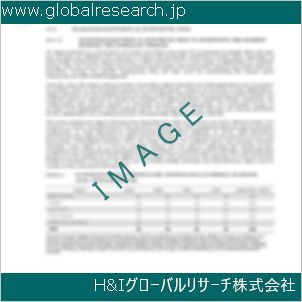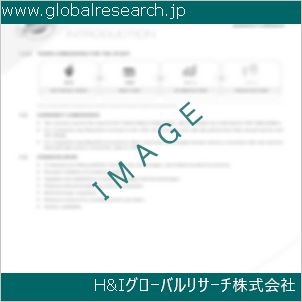Table of Contents
1 Industry Overview of 1,5-Pentanediol
1.1 Definition and Specifications of 1,5-Pentanediol
1.1.1 Definition of 1,5-Pentanediol
1.1.2 Specifications of 1,5-Pentanediol
1.2 Classification of 1,5-Pentanediol
1.3 Applications of 1,5-Pentanediol
1.3.1 Nuclear Application
1.3.2 Non-Nuclear Application
1.4 Industry Chain Structure of 1,5-Pentanediol
1.5 Industry Overview and Major Regions Status of 1,5-Pentanediol
1.5.1 Industry Overview of 1,5-Pentanediol
1.5.2 Global Major Regions Status of 1,5-Pentanediol
1.6 Industry Policy Analysis of 1,5-Pentanediol
1.7 Industry News Analysis of 1,5-Pentanediol
2 Manufacturing Cost Structure Analysis of 1,5-Pentanediol
2.1 Raw Material Suppliers and Price Analysis of 1,5-Pentanediol
2.2 Equipment Suppliers and Price Analysis of 1,5-Pentanediol
2.3 Labor Cost Analysis of 1,5-Pentanediol
2.4 Other Costs Analysis of 1,5-Pentanediol
2.5 Manufacturing Cost Structure Analysis of 1,5-Pentanediol
2.6 Manufacturing Process Analysis of 1,5-Pentanediol
3 Technical Data and Manufacturing Plants Analysis of 1,5-Pentanediol
3.1 Capacity and Commercial Production Date of Global 1,5-Pentanediol Major Manufacturers in 2023
3.2 Manufacturing Plants Distribution of Global 1,5-Pentanediol Major Manufacturers in 2023
3.3 R&D Status and Technology Source of Global 1,5-Pentanediol Major Manufacturers in 2023
3.4 Raw Materials Sources Analysis of Global 1,5-Pentanediol Major Manufacturers in 2023
4 Capacity, Production and Revenue Analysis of 1,5-Pentanediol by Regions, Types and Manufacturers
4.1 Global Capacity, Production and Revenue of 1,5-Pentanediol by Regions 2019-2024
4.2 Global and Major Regions Capacity, Production, Revenue and Growth Rate of 1,5-Pentanediol 2019-2024
4.3 Global Capacity, Production and Revenue of 1,5-Pentanediol by Types 2019-2024
4.4 Global Capacity, Production and Revenue of 1,5-Pentanediol by Manufacturers 2019-2024
5 Price, Cost, Gross and Gross Margin Analysis of 1,5-Pentanediol by Regions, Types and Manufacturers
5.1 Price, Cost, Gross and Gross Margin Analysis of 1,5-Pentanediol by Regions 2019-2024
5.2 Price, Cost, Gross and Gross Margin Analysis of 1,5-Pentanediol by Types 2019-2024
5.3 Price, Cost, Gross and Gross Margin Analysis of 1,5-Pentanediol by Manufacturers 2019-2024
6 Consumption Volume, Consumption Value and Sale Price Analysis of 1,5-Pentanediol by Regions, Types and Applications
6.1 Global Consumption Volume and Consumption Value of 1,5-Pentanediol by Regions 2019-2024
6.2 Global and Major Regions Consumption Volume, Consumption Value and Growth Rate of 1,5-Pentanediol 2019-2024
6.3 Global Consumption Volume and Consumption Value of 1,5-Pentanediol by Types 2019-2024
6.4 Global Consumption Volume and Consumption Value of 1,5-Pentanediol by Applications 2019-2024
6.5 Sale Price of 1,5-Pentanediol by Regions 2019-2024
6.6 Sale Price of 1,5-Pentanediol by Types 2019-2024
6.7 Sale Price of 1,5-Pentanediol by Applications 2019-2024
6.8 Market Share Analysis of 1,5-Pentanediol by Different Sale Price Levels
7 Supply, Import, Export and Consumption Analysis of 1,5-Pentanediol
7.1 Supply, Consumption and Gap of 1,5-Pentanediol 2019-2024
7.2 Global Capacity, Production, Price, Cost, Revenue, Supply, Import, Export and Consumption of 1,5-Pentanediol 2019-2024
7.3 USA Capacity, Production, Price, Cost, Revenue, Supply, Import, Export and Consumption of 1,5-Pentanediol 2019-2024
7.4 EU Capacity, Production, Price, Cost, Revenue, Supply, Import, Export and Consumption of 1,5-Pentanediol 2019-2024
7.5 China Capacity, Production, Price, Cost, Revenue, Supply, Import, Export and Consumption of 1,5-Pentanediol 2019-2024
7.6 Japan Capacity, Production, Price, Cost, Revenue, Supply, Import, Export and Consumption of 1,5-Pentanediol 2019-2024
8 Major Manufacturers Analysis of 1,5-Pentanediol
8.1 Manufacturer One
8.1.1 Company Profile
8.1.2 Product Picture and Specifications
8.1.2.1 Type I
8.1.2.2 Type II
8.1.2.3 Type III
8.1.3 Capacity, Production, Price, Cost, Gross and Revenue
8.1.4 Contact Information
8.2 Manufacturer Two
8.2.1 Company Profile
8.2.2 Product Picture and Specifications
8.2.2.1 Type I
8.2.2.2 Type II
8.2.2.3 Type III
8.2.3 Capacity, Production, Price, Cost, Gross and Revenue
8.2.4 Contact Information
8.3 Manufacturer Three
8.3.1 Company Profile
8.3.2 Product Picture and Specifications
8.3.2.1 Type I
8.3.2.2 Type II
8.3.2.3 Type III
8.3.3 Capacity, Production, Price, Cost, Gross and Revenue
8.3.4 Contact Information
8.4 Manufacturer Four
8.4.1 Company Profile
8.4.2 Product Picture and Specifications
8.4.2.1 Type I
8.4.2.2 Type II
8.4.2.3 Type III
8.4.3 Capacity, Production, Price, Cost, Gross and Revenue
8.4.4 Contact Information
8.5 Manufacturer Five
8.5.1 Company Profile
8.5.2 Product Picture and Specifications
8.5.2.1 Type I
8.5.2.2 Type II
8.5.2.3 Type III
8.5.3 Capacity, Production, Price, Cost, Gross and Revenue
8.5.4 Contact Information
…
9 Marketing Trader or Distributor Analysis of 1,5-Pentanediol
9.1 Marketing Channels Status of 1,5-Pentanediol
9.2 Traders or Distributors with Contact Information of 1,5-Pentanediol by Regions
9.3 Ex-work Price, Channel Price and End Buyer Price Analysis of 1,5-Pentanediol
9.4 Regional Import, Export and Trade Analysis of 1,5-Pentanediol
10 Industry Chain Analysis of 1,5-Pentanediol
10.1 Upstream Major Raw Materials Suppliers Analysis of 1,5-Pentanediol
10.1.1 Major Raw Materials Suppliers with Contact Information Analysis of 1,5-Pentanediol
10.1.2 Major Raw Materials Suppliers with Supply Volume Analysis of 1,5-Pentanediol by Regions
10.2 Upstream Major Equipment Suppliers Analysis of 1,5-Pentanediol
10.2.1 Major Equipment Suppliers with Contact Information Analysis of 1,5-Pentanediol
10.2.2 Major Equipment Suppliers with Product Pictures Analysis of 1,5-Pentanediol by Regions
10.3 Downstream Major Consumers Analysis of 1,5-Pentanediol
10.3.1 Major Consumers with Contact Information Analysis of 1,5-Pentanediol
10.3.2 Major Consumers with Consumption Volume Analysis of 1,5-Pentanediol by Regions
10.4 Supply Chain Relationship Analysis of 1,5-Pentanediol
11 Development Trend of Analysis of 1,5-Pentanediol
11.1 Capacity, Production and Revenue Forecast of 1,5-Pentanediol by Regions and Types
11.1.1 Global Capacity, Production and Revenue of 1,5-Pentanediol by Regions 2024-2029
11.1.2 Global and Major Regions Capacity, Production, Revenue and Growth Rate of 1,5-Pentanediol 2024-2029
11.1.3 Global Capacity, Production and Revenue of 1,5-Pentanediol by Types 2024-2029
11.2 Consumption Volume and Consumption Value Forecast of 1,5-Pentanediol by Regions, Types and Applications
11.2.1 Global Consumption Volume and Consumption Value of 1,5-Pentanediol by Regions 2024-2029
11.2.2 Global and Major Regions Consumption Volume, Consumption Value and Growth Rate of 1,5-Pentanediol 2024-2029
11.2.3 Global Consumption Volume and Consumption Value of 1,5-Pentanediol by Types 2024-2029
11.2.4 Global Consumption Volume and Consumption Value of 1,5-Pentanediol by Applications 2024-2029
11.3 Supply, Import, Export and Consumption Forecast of 1,5-Pentanediol
11.3.1 Supply, Consumption and Gap of 1,5-Pentanediol 2024-2029
11.3.2 Global Capacity, Production, Price, Cost, Revenue, Supply, Import, Export and Consumption of 1,5-Pentanediol 2024-2029
11.3.3 USA Capacity, Production, Price, Cost, Revenue, Supply, Import, Export and Consumption of 1,5-Pentanediol 2024-2029
11.3.4 EU Capacity, Production, Price, Cost, Revenue, Supply, Import, Export and Consumption of 1,5-Pentanediol 2024-2029
11.3.5 China Capacity, Production, Price, Cost, Revenue, Supply, Import, Export and Consumption of 1,5-Pentanediol 2024-2029
11.3.6 Japan Capacity, Production, Price, Cost, Revenue, Supply, Import, Export and Consumption of 1,5-Pentanediol 2024-2029
12 New Project Investment Feasibility Analysis of 1,5-Pentanediol
12.1 New Project SWOT Analysis of 1,5-Pentanediol
12.2 New Project Investment Feasibility Analysis of 1,5-Pentanediol
13 Conclusion of the Global 1,5-Pentanediol (CAS 111-29-5) Industry 2024 Market Research Report
| ※参考情報 1,5-ペンタンジオール(1,5-Pentanediol)は、化学式C5H12O2を持つ二価アルコールであり、CAS番号は111-29-5です。この化合物は、長鎖アルコールの一種で、ポリウレタンやポリエステル樹脂などの合成に利用される重要な中間体です。以下では、1,5-ペンタンジオールの定義、特徴、種類、用途、関連技術について詳述いたします。 まず、1,5-ペンタンジオールの定義についてです。この化合物は、ペンタンの1位および5位にヒドロキシル基(-OH)が結合していることから名付けられています。二価アルコールであるため、二つのヒドロキシル基を持ち、化学反応に対する多様な反応性を示します。一般的に、長鎖アルコールは脂溶性が高く、化学的安定性にも優れています。このような特性から、様々な化学合成の中間体として広く使用されています。 次に、1,5-ペンタンジオールの特徴について見ていきます。この化合物は無色透明の液体であり、甘い香りを持ちます。水溶性は高く、酢酸やエタノールに対しても可溶性です。加えて、沸点は約236℃であり、融点は-20℃程度です。これらの物理的特性により、温度変化に対する安定性と扱いやすさを兼ね備えています。また、1,5-ペンタンジオールは他の化合物と反応しやすく、エステル化反応やアルキル化反応など、多様な化学反応に使用されます。 種類に関しては、1,5-ペンタンジオールは主にその構造に基づく分類が可能です。一般的には、一次アルコールと二次アルコールに分類されますが、1,5-ペンタンジオールは一次アルコールに分類されます。また、同様の構造を持つ他のペンタンジオール(例えば、1,2-ペンタンジオールや1,3-ペンタンジオールなど)と区別されることがあります。それぞれの異なる構造により、機能性や特性が異なるため、用途に応じた選択が求められます。 用途については、1,5-ペンタンジオールは主に工業分野において多岐にわたる用途があります。その中で特に重要なのは、ポリウレタンやポリエステルの合成です。1,5-ペンタンジオールは多価アルコールとして、ポリウレタンの軟化剤や可塑剤として使用されます。ポリウレタンは、自動車、建材、家具、靴、衣類など多くの製品に利用され、その性能を向上させるために必要不可欠な材料です。 さらに、1,5-ペンタンジオールはコーティング剤や接着剤、ソルベント、洗浄剤などの生産にも関与しています。特に、高分子材料の製造においては、化学的安定性や耐熱性を向上させる効果が期待されます。これにより、より強固で耐久性のある製品や、環境に優しい製品の開発が進められています。 関連技術に関しては、1,5-ペンタンジオールの合成方法は複数存在します。最も一般的な合成法は、サステイナブルな出発物質を利用した反応です。例えば、グルコースやトウモロコシ由来の糖質を原料とするバイオマス由来の合成法が注目されています。また、白色物質や石油化学由来の原料を使った合成法も依然として広く利用されています。このように、多様な手法があるため、製造コストや環境への影響を考慮した上で最適なプロセスが選定されます。 さらに、1,5-ペンタンジオールの新たな応用可能性を探索するための研究開発も進行中です。例えば、ナノテクノロジーを活用した新しい材料の開発や、生体適合性を持つ材料としての利用などが考えられています。これにより、医療やバイオテクノロジー分野への応用が期待されており、将来的にはますます多岐にわたる用途が見込まれています。 総じて、1,5-ペンタンジオールはその特性や用途の広さから、現代の化学工業において重要な化合物であることは言うまでもありません。今後もさらなる技術革新とともに、さまざまな分野における応用が進むことが期待されています。 |
❖ 免責事項 ❖
http://www.globalresearch.jp/disclaimer












